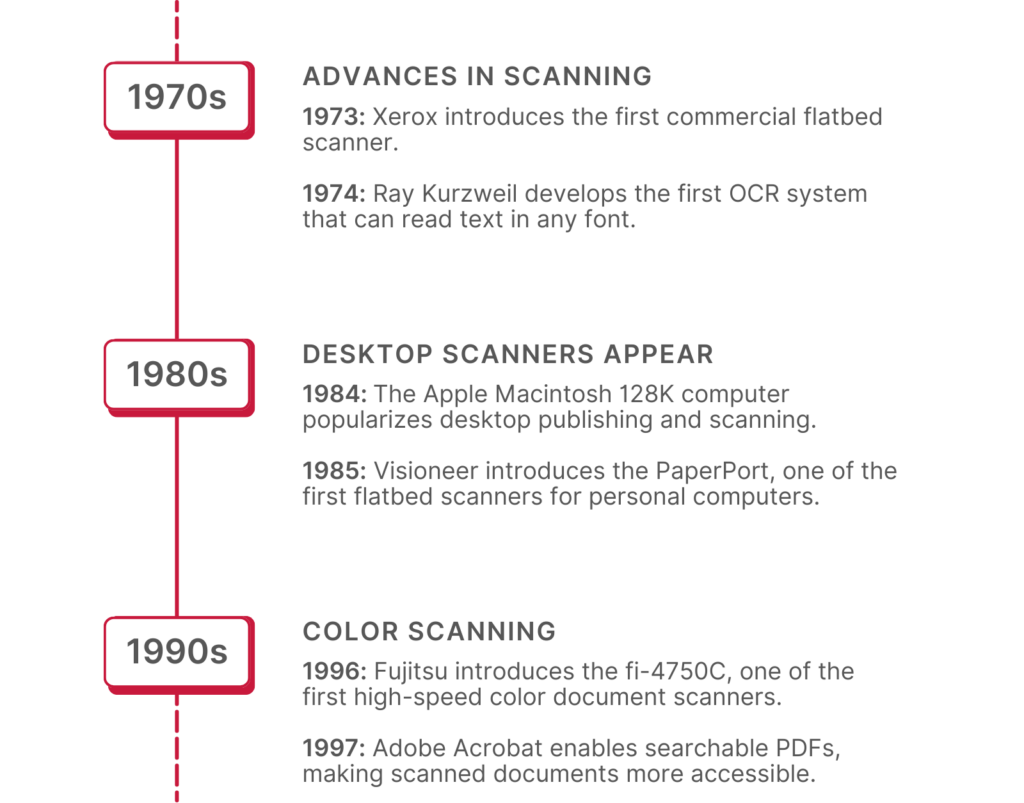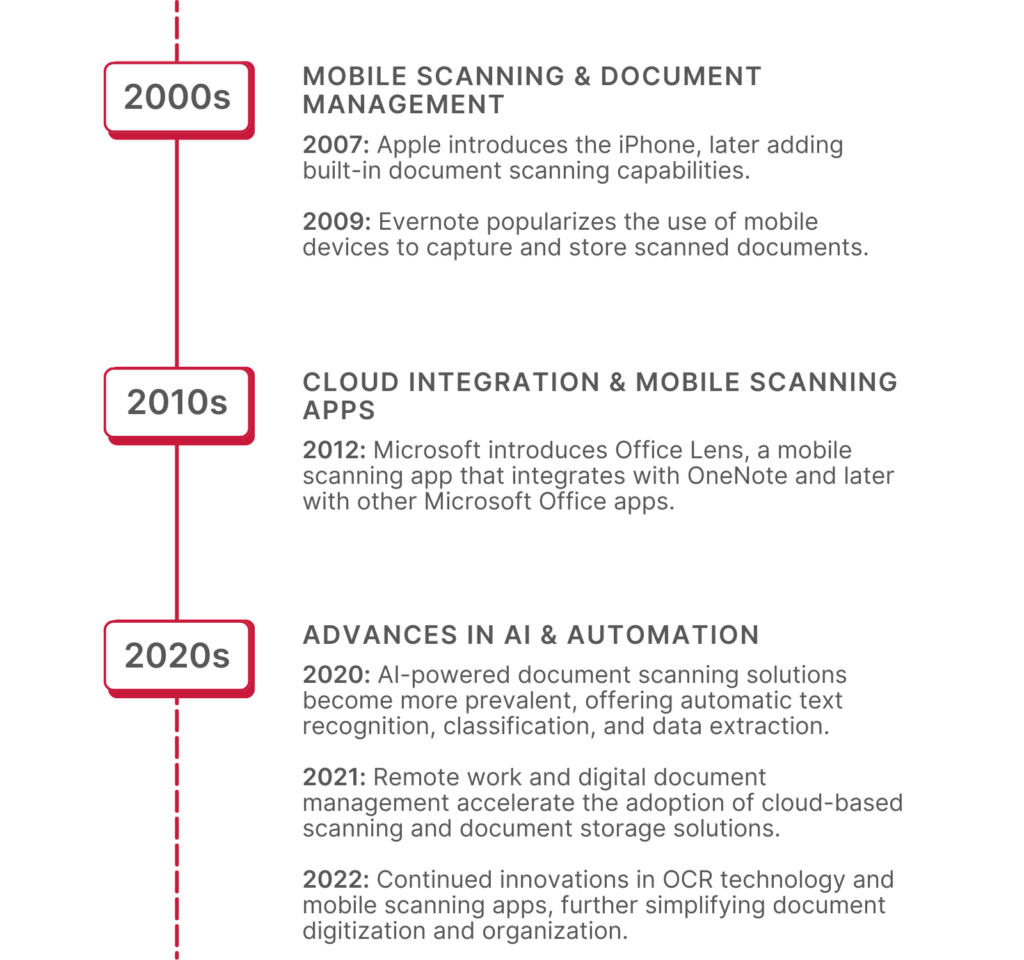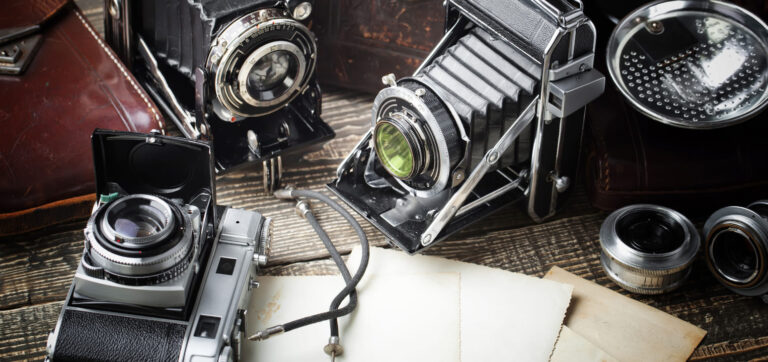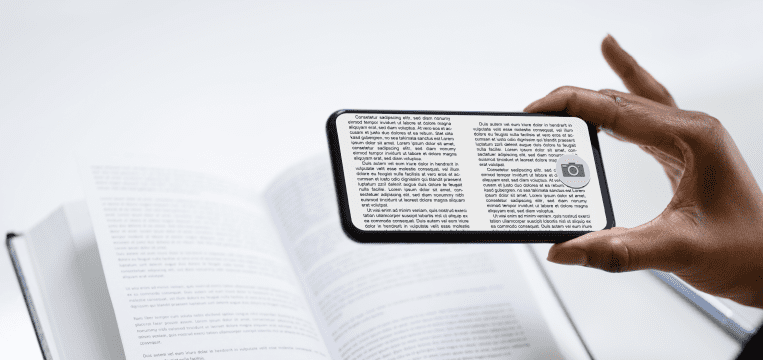The first glimmer
The humble beginning of scanning dates back to the 16th century with the appearance of camera obscura. This precursor to modern photography used a pinhole to project an image onto a surface, resembling a primitive camera. The images could not be captured yet, however.
This changed in the 19th century with the invention of photography. The fathers of photography, Louis Daguerre and William Henry Fox Talbot, used chemical processes to capture images on metal plates and paper.
As the next step towards document scanning, a way was needed to easily copy – and transmit – images.
In 1860, the pantelegraph emerged, vaguely mirroring today’s fax machines. For the first time, telegraph lines could be used to transmit handwriting and drawings. The device soon proved invaluable for verifying signatures in banking.
What did this look like? A pair of pantelegraphs transmitted the images, but the receiving end did not print them out in ink, unlike later fax machines. Instead, the shared image was permanently recorded on special chemically treated paper. The reproduction could thus be preserved for future reference or verification.
In 1913, the belinograph revolutionized image scanning and transmission. Thanks to the recently-invented photocell, it became far easier to send images over standard telephone lines.
This breakthrough laid the foundation for the Associated Press (AP) press distribution service. The AP was established in 1846 to share news stories among member newspapers. Belinograph technology enabled the AP to rapidly transmit both text-based news and visual content. This innovation transformed news reporting and distribution, ushering in a new era where images shaped how information was presented and consumed.
Fast-forward to 1924, where Richard Ranger’s work resulted in the wireless photoradiogram technology. This precursor to modern fax machines achieved a significant milestone by transmitting the first photograph across the Atlantic: from New York to London.
While the photoradiogram didn’t use telephone lines like modern fax machines, it did set the stage for sending images over long distances.
From the camera obscura to photoradiograms, these inventions document the pursuit of ways to efficiently capture and share visual information. They paved for still more advanced technology – and, ultimately, modern document scanning.
Early document scanning technology

The true revolution in document scanning arrived in the 1930s with the introduction of the photocopier. Chester Carlson developed the Xerox machine, the first automatic photocopying device. It used xerography to transfer images from a photosensitive drum to paper. The photocopier made document replication faster and more accessible.
During the 1950s, David H. Shepard’s “Statistical Machine” gave rise to optical character recognition (OCR). This innovation enabled the optical reading and conversion of printed text into electrical impulses, revolutionizing text processing.
In the 1960s, scanning technology advanced with IBM’s 805 Test Scoring Machine and Russell Kirsch’s Drum Scanner, the first flatbed scanner.
The 1970s saw the launch of commercial flatbed scanners from Xerox and Ray Kurzweil’s versatile OCR system, capable of reading text in any font.
The 1980s brought the release of the Apple Macintosh, propelling desktop publishing and scanning into the mainstream. Visioneer’s PaperPort further developed scanning by making flatbed scanners accessible to personal computer users.
Throughout the 1990s, the landscape continued to evolve with the introduction of color scanning, thanks to Fujitsu’s high-speed color document scanner. Simultaneously, Adobe’s launch of the searchable PDF format transformed how scanned documents were accessed and managed.

Scanning goes mobile
With the advent of smartphones at the beginning of the 21st century, document scanning underwent its most dramatic transformation. Mobile apps and built-in camera technology turned our handheld devices into powerful document scanners. Suddenly, anyone could easily capture, store, and share documents, significantly impacting industries like business, education, and healthcare.
Document scanning soon became more deeply integrated into mobile devices. Apple’s iPhone introduced built-in scanning capabilities, Google Docs incorporated OCR for scanned documents, and Evernote popularized mobile document capture and storage.
In the 2010s, the focus was on cloud integration. Microsoft launched Office Lens, and Adobe Acrobat DC offered mobile scanning and editing capabilities.
Now, in the 2020s, AI-powered document scanning solutions provide automated text recognition, classification, and data extraction. They mark the latest chapter in the evolution of document scanning – but there is still room to grow. The remote work trend and digital document management further accelerated the adoption of cloud-based scanning and storage solutions.

The present and beyond
Today’s smartphones have high-resolution cameras and offer more than enough precision when scanning documents and receipts and recognizing data. It is now on app developers to make the most of the modern hardware.
The journey of document scanning has been remarkable, from its humble beginnings in the camera obscura to today’s sophisticated smartphone scanners. As technology continues to advance, the future possibilities for document scanning are limitless.
Integrating a document scanner into your mobile app
The Scanbot Document Scanning SDK provides a cutting-edge solution that empowers developers to integrate document scanning capabilities into their applications. With the Scanbot SDK, businesses can streamline document management, enhance the user experience, and take full advantage of the smartphone’s scanning potential.
Download our Demo App or get a no-strings-attached 7-day trial license to try the Scanbot SDK for free.







